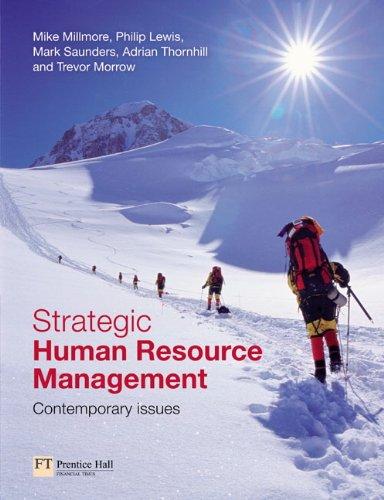Before reading on, how would you critique Garavans depiction of SHRD as summarised in Key Concepts 10.2?
Question:
Before reading on, how would you critique Garavan’s depiction of SHRD as summarised in Key Concepts 10.2?
Key Concepts 10.2:
1. Integration with organisational missions and goals – where HRD is systematically integrated with wider business planning in a supporting role so that sight is not lost of organisational strategic objectives when developing HRD interventions.
2. Top management support – where the strategic integration of HRD requires the active support and participation of senior management in order to become a reality.
3. Environmental scanning – where the HRD function has the capacity to continuously analyse the external environment in order to identify both opportunities and threats to business and HRD strategies and thereby reinforce access to top table planning discussions.
4. HRD plans and policies – where systematic integration requires the formulation of HRD plans and policies to support wider business needs. For this planning to assume strategic status it must incorporate environmental scanning and scenario planning which, when used to regularly and systematically inform strategy formulation, can lead to HRD assuming a proactive, shaping function rather than simply a reactionary one.
5. Line manager commitment and involvement – consistent with the development of SHRM, the line manager takes centre stage in identifying and addressing the HRD needs of subordinates. This requires his or her active commitment and participation, where any relegation of their HRD roles and responsibilities in their list of managerial priorities will jeopardise its successful delivery.
6. Existence of complementary HRM activities – these cover such areas as improving HRP, recruiting higher-calibre employees, more exacting performance appraisal and identification of HRD needs, and individually and organisationally focused career development plans.
7. Expanded trainer role – where to support a strategic orientation HRD specialists need to develop their roles to become more proactive, interventionist, central and influential. This is likely to be embodied in the movement from training provider to a consultant, innovator role.
8. Recognition of culture – where the onus is on the HRD function to develop its activities in line not only with organisational strategy but also with organisation culture. This includes the key role of shaping HRD activities to maintain and change corporate culture.
9. Emphasis on evaluation – where, in order to develop its strategic relevance, the HRD function must evaluate its activities so that its strategic contribution and relevance can be assessed.
Step by Step Answer:

Strategic Human Resource Management Contemporary Issues
ISBN: 9780273681632
1st Edition
Authors: Mark N. K. Saunders; Mike Millmore; Philip Lewis; Adrian Thornhill; Trevor Morrow





